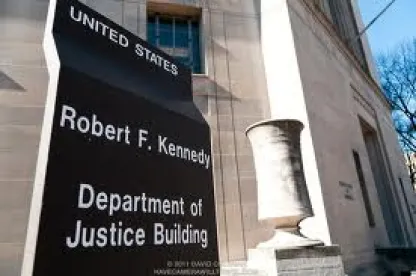Summary
In a two-page memorandum, the US Department of Justice (DOJ) announced a broad policy statement prohibiting the use of agency guidance documents as the basis for proving legal violations in civil enforcement actions, including actions brought under the False Claims Act (FCA). The extent to which these policy changes ultimately create relief for health care defendants in FCA actions is unclear at this time. That said, the memo provides defendants with a valuable tool in defending FCA actions, either brought by DOJ or relator’s counsel, that attempt to use alleged noncompliance with agency sub-regulatory guidance as support for an FCA theory.
In Depth
The Sessions Memo
On November 16, 2017, Attorney General Jeff Sessions issued a policy memorandum (the Sessions Memo) prohibiting DOJ components from issuing “guidance documents that purport to create rights or obligations binding on persons or entities outside the Executive Branch” without undergoing the rulemaking process required under the Administrative Procedure Act (APA).
As a quick refresher, the APA authorizes federal agencies to promulgate “rules,” defined as an agency statement of general or particular applicability and future effect designed to implement, interpret, or prescribe law or policy or describing the organization, procedure, or practice requirements of an agency. 5 USC § 551(4). A legislative (also known as “substantive”) rule binds the public and has the force and effect of law, provided the rule is consistent with the statute and the agency's rulemaking authority. The APA generally requires that a legislative rule undergo notice-and-comment rule-making, a process through which the public is given an opportunity to comment on a proposed version of the rule before it becomes effective. In contrast, notice-and-comment requirements do not apply to interpretive rules under the APA because interpretive rules are not binding and do not have the force and effect of law. Instead, interpretive rules, such as guidance documents and other types of sub-regulatory guidance, only state the agency’s interpretation of its governing law or regulations.
The Sessions Memo is specifically concerned with DOJ’s historical use of its own interpretive rules to bind non-government parties and—as Sessions puts it—“coerce persons or entities … into taking any action or refraining from taking any action beyond what is required by the terms of the applicable statute or regulations.” The memo states that DOJ may use guidance documents “to educate regulated parties through plain-language restatements of existing legal requirements, or to provide non-binding advice on technical issues through examples or practices to guide the application or interpretation of statues and regulations.”
The Brand Memo
Applying the principles of the Sessions Memo more broadly, on January 25, 2018, then-US Associate Attorney General Rachel Brand issued a memorandum directing civil litigators in the DOJ to limit use of guidance issued by other federal agencies in affirmative civil enforcement (ACE) actions (the Brand Memo). “Guidance documents” are defined as “any agency statement of general applicability and future effect, whether styled as guidance or otherwise, that is designed to advise parties outside the federal executive branch about legal rights and obligations.”
Specifically, the Brand Memo states that DOJ “may not use its enforcement authority to effectively convert agency guidance documents into binding rules” and instructs that DOJ attorneys “may not use noncompliance with guidance documents as a basis for proving violations of applicable law in ACE cases.” Like the Sessions Memo, the Brand Memo notes that guidance documents may be used for “proper purposes,” such as explaining or paraphrasing legal mandates for existing statutes or regulations. In addition, the Brand Memo says that DOJ may use whether a party read guidance documents as evidence to demonstrate knowledge of a rule. However, DOJ “should not treat a party’s noncompliance with an agency guidance document as presumptively or conclusively establishing that the party violated the applicable statute or regulation.”
Implications for Health Care Agency Guidance
The Brand Memo’s implications for the health care industry could prove to be significant. Interpretive guidance from various federal agencies are often relied on by DOJ and relators alike to demonstrate a violation of law necessary to support a claim under the FCA and other civil statutes. This is particularly true in the health care context. Sub-regulatory agency guidance interpreting health care regulations is commonly issued by agencies, due largely to the complexity of the rules and regulations governing federal health care programs. For example, the US Department of Health and Human Services (HHS), including the Centers for Medicare & Medicaid Services (CMS), its contractors, the Office of Inspector General (HHS-OIG), and the Food and Drug Administration (FDA), frequently issue sub-regulatory guidance, including preamble commentary, manuals, bulletins, fraud alerts, policy guidance, advisory opinions, and national and local coverage determinations.
Specifically, CMS Medicare Manuals often have detailed criteria that are not included in the regulations. As a recent example, in an early 2017 Eastern District of North Carolina case challenging CMS’s denial of certain inpatient rehabilitation claims, the court ruled in favor of the plaintiff health care provider, finding that the Medicare Benefit Policy Manual contained pre-admission documentation requirements that went “well beyond” the documentation criteria in the regulations and were not subject to notice-and-comment rulemaking (Cumberland Cty. Hosp. Sys. Inc. v. Price, 2017 BL 84724 (E.D.N.C. Feb. 28, 2017)). There are a number of other courts that found similar instances in which CMS impermissibly instituted legislative rules through its manuals. Another notable recurring FCA issue is the manual's expanded definition of the statutory term "medical necessity" as including "accepted standards of medical practice."
Similarly, the FDA has issued a variety of interpretive guidance to assist providers, as well as drug and medical device manufacturers, in understanding its complex rules, including guidance regarding off-label promotion. Allegations that a company engaged in off-label promotion has often been the basis for FCA cases as well as other civil and criminal enforcement actions. However, this theory is largely a creation of DOJ and FDA interpretation of the misbranding provisions of the Food Drug and Cosmetic Act—there is no specific statutory or regulatory prohibition of off-label marketing. Furthermore, Medicare and Medicaid often do pay for off-label uses when supported by sufficient clinical research. See 42 USC 1395x(t)(2)(B). Despite those issues, DOJ and relators have extracted billions from pharmaceutical companies to settle FCA claims based on this theory. Further, FDA’s interpretations of various quality and manufacturing standards for drugs and medical devices often provide the basis for civil injunction actions and consent decrees based on alleged violations of current Good Manufacturing Practice (cGMP) requirements.
Finally, for many years HHS-OIG has issued numerous guidance documents concerning a broad range of federal health care program laws, including the federal anti-kickback, beneficiary inducement, and exclusion statutes, as well as “compliance program guidance” documents tailored to certain industry sectors explaining the elements HHS-OIG believes should be present in a compliance program. While HHS-OIG’s guidance documents generally are phrased as not creating new legal obligations, DOJ and relator counsel have historically relied on such documents to support their legal position concerning whether a particular practice violates the law.
Future Impact
The basic premise that DOJ cannot enforce interpretive guidance that is not subject to notice-and-comment rulemaking as required by the APA is consistent with well-established law and common sense. See Christensen v. Harris County, 529 US 576, 587-588 (2000). After all, as its name implies, interpretive guidanceis intended to clarify an agency’s interpretation of a substantive rule, not to create separate legal obligations. In practice, however, DOJ and relators alike routinely rely upon agency guidance documents as key "proof" that a defendant’s actions violated the law. In the FCA context, agency guidance is often used as supporting the argument that the claims were somehow "false" because of alleged noncompliance with such guidance. This use should now pose more difficulties for DOJ and relators.
The Brand Memo itself does not answer all questions and poses some of its own. The distinction between the permissible use of agency guidance to “explain or paraphrase legal mandates” from existing statutes and rules—versus the impermissible use of guidance as a binding rule—is not further articulated. This distinction will likely be the subject of conference room disputes and courtroom litigation in many FCA cases. Further, the Brand Memo is technically limited to civil actions by DOJ to recover government funds and impose penalties. However, DOJ seems hard-pressed to argue that relying on sub-regulatory guidance in the context of a civil action is impermissible, while simultaneously permitting its use in criminal actions. Indeed, the Sessions Memo, upon which the Brand Memo relies, pertains to all components of the DOJ. However, the Sessions and Brand Memos also do not apply to administrative actions brought by agencies outside of the DOJ, such as HHS-OIG or FDA, nor do they bind relators litigating non-intervened actions under the FCA. Nevertheless, these limitations should prove to be unimportant in the long run because, again, the principle concerning the appropriate use of agency guidance is well-supported by the APA.
Whether this shift in DOJ policy will ultimately translate to relief for health care providers remains to be seen. The Brand Memo may provide new opportunities for defendants to argue that a particular enforcement action is impermissibly based on the compliance with interpretive guidance rather than substantive rules. The argument may be coupled with a request under the Granston Memo that DOJ affirmatively move to dismiss a relator’s case that stretches the bounds of the Brand Memo.






 />i
/>i

